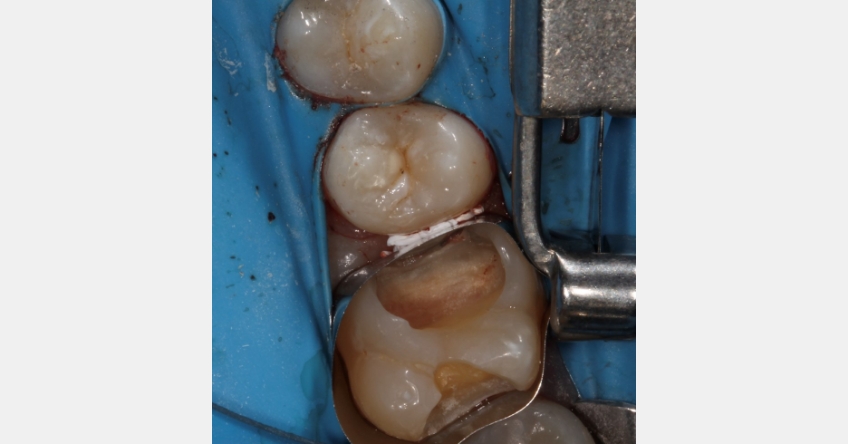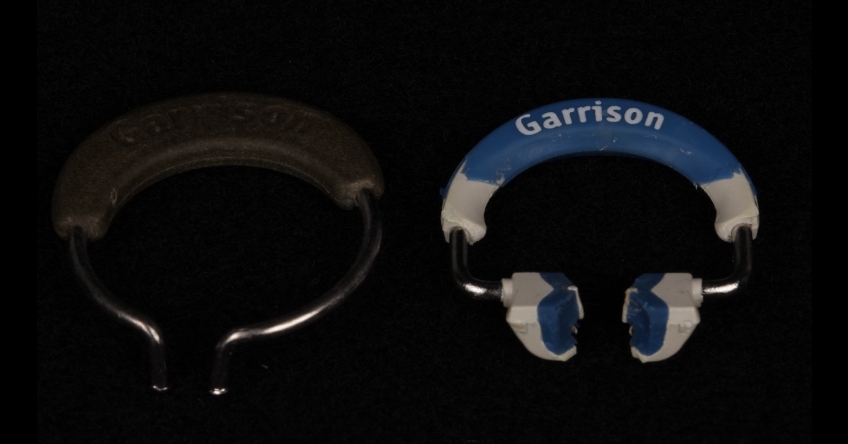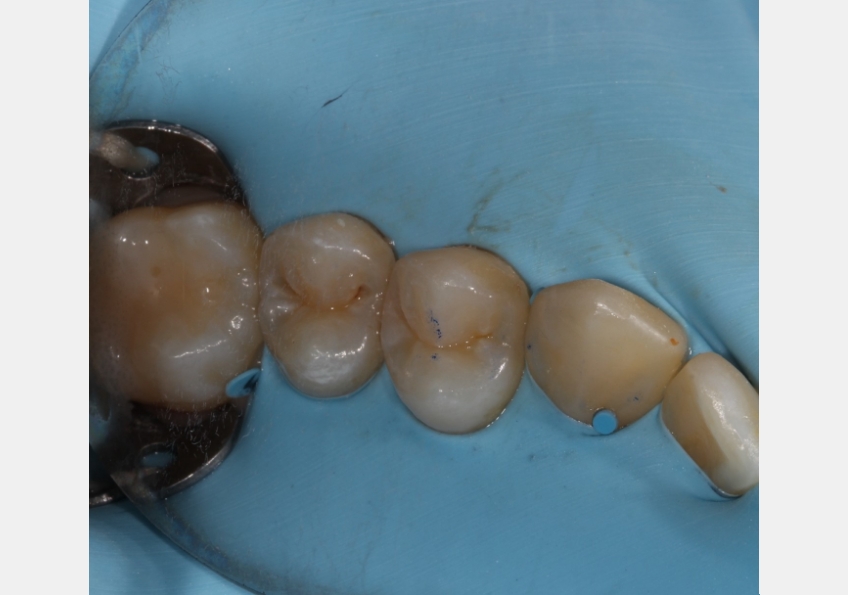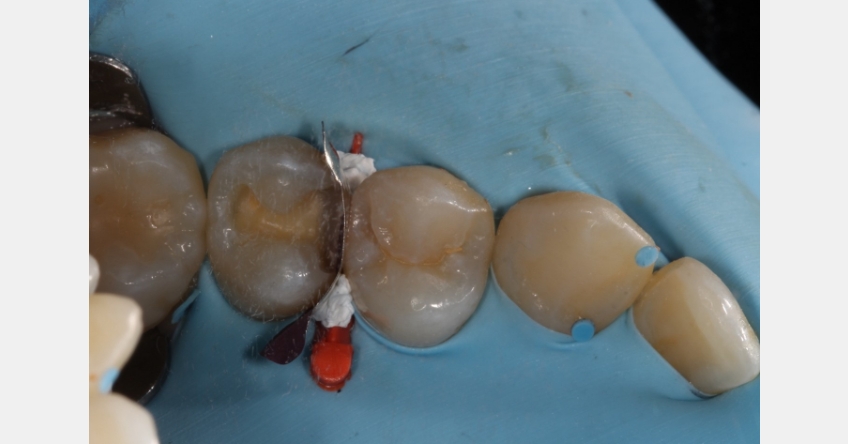Two Restorative Uses for Teflon Tape in Dentistry
Teflon tape, or PTFE (polytetrafluoroethylene) tape, like this medical grade tape, is a remarkably versatile and indispensable tool in dentistry. Its cost-effectiveness, biocompatibility, and ease of use make it a game-changer in elevating the predictability of everyday clinical dental procedures. From facilitating gingival retraction and ensuring sealing and isolation to safeguarding adjacent teeth and serving as a lubricant, Teflon tape possesses many applications that can significantly enhance your restorative procedures.
Use case #1: Deep margin elevation
Problem: It can be a challenge to achieve a precise margin when using restorative materials for deep margin elevation, because of the risk of material extruding into the gingival tissues.
Solution: The “matrix-in-a-matrix” technique is commonly used to seal the gap between the matrix band and the tooth. However, using Teflon tape is an alternative and equally effective approach. This technique, dubbed “the Belknap band” in honor of Dr. William Belknap, entails inserting a 2-inch strip of Teflon tape between the matrix band and the adjacent tooth, ensuring a snug seal that maintains the anatomical contour of the margin (Fig. 1). This method minimizes the likelihood of poor anatomical form or concavities.

Use case #2: Class II composite restorations
Problem: Sectional matrix systems, although designed to provide optimal contour and interproximal contact for Class II composite restorations, can still result in flash and overhangs, particularly when dealing with rotated or mispositioned teeth.
Solution: In cases where a space between the ring and the matrix band is a concern, employing approximately 1 inch of Teflon tape on both the buccal and lingual aspects of the band ensures a closer, more intimate fit between the matrix band and the tooth. This approach significantly reduces the risk of flash and overhangs, ultimately producing a superior contour for the Class II restoration.





Summary
The versatile nature of Teflon tape as an invaluable ally in restorative dentistry is undeniable. Its ability to address common challenges in deep margin elevation and Class II composite restorations can substantially elevate the quality and predictability of your clinical dental procedures. Integrating Teflon tape into your practice can improve results and enhance patient satisfaction with improved restorations.
SPEAR campus
Hands-On Learning in Spear Workshops
With enhanced safety and sterilization measures in place, the Spear Campus is now reopened for hands-on clinical CE workshops. As you consider a trip to Scottsdale, please visit our campus page for more details, including information on instructors, CE curricula and dates that will work for your schedule.

By: Andy Janiga
Date: October 10, 2023
Featured Digest articles
Insights and advice from Spear Faculty and industry experts


